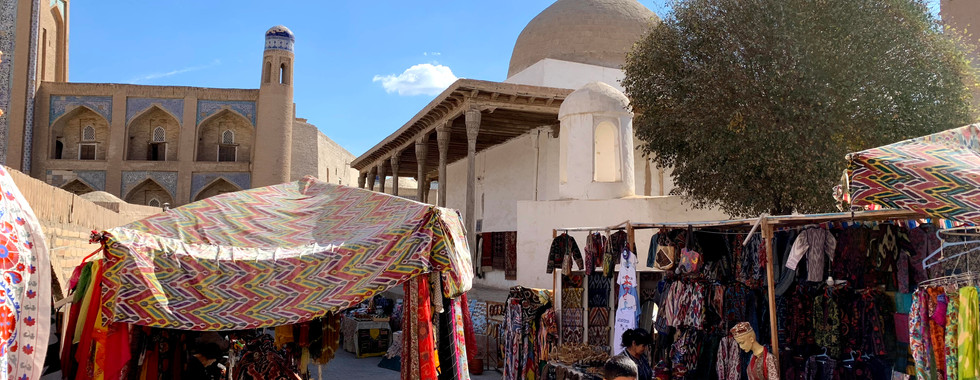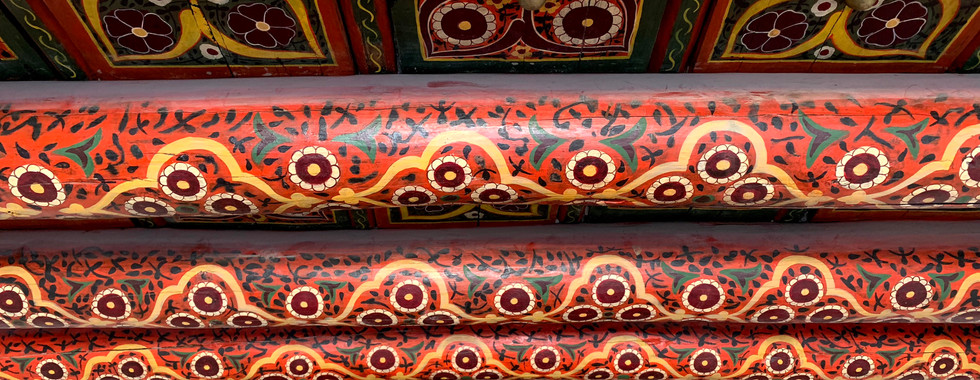Captivating Khiva: A Time-Traveler's Paradise in Uzbekistan
- Timothy W. Go

- Aug 5, 2023
- 2 min read
Nestled in the heart of the vast Kyzylkum Desert in Uzbekistan, the ancient city of Khiva beckons travelers with its mesmerizing blend of history, architecture, and culture. Stepping into Khiva is like stepping into a living museum, where every corner whispers tales of the Silk Road and the vibrant civilizations that once thrived here.
A Glimpse of History: Khiva's history stretches back over two millennia, with its origins shrouded in legend and folklore. It was a vital trading hub along the Silk Road, connecting the East and West in a flourishing exchange of goods, ideas, and cultures. Its rich history is evident in the city's well-preserved architecture, which spans various periods and dynasties.
Architectural Marvels: The city's UNESCO-listed historic center, Ichan Kala, is a treasure trove of architectural wonders. The imposing city walls, adorned with intricate tile work, give way to a labyrinth of narrow alleys that lead to stunning mosques, minarets, madrasahs, and palaces. The Kalta Minor Minaret's vivid blue tiles and the Juma Mosque's unparalleled wooden columns are just a glimpse of the visual splendor that awaits.
Wandering through Ichan Kala: Exploring Ichan Kala is like taking a journey through time. The Kunya-Ark fortress, once a royal residence, offers panoramic views of the city from its watchtower. The Tosh-Hovli Palace complex showcases opulent courtyards and delicate tile mosaics. And the Muhammad Amin Khan Madrasah's grandeur leaves visitors in awe of the architectural prowess of the past.
The Artisan Soul: Khiva isn't just about grand edifices; it's also a hub of craftsmanship. The bazaars and workshops in Ichan Kala are perfect places to witness traditional Uzbek crafts coming to life. Exquisite carpets, intricate ceramics, and delicate jewelry are skillfully crafted, allowing visitors to take home a piece of Khiva's artistic heritage.
Embracing Culture: Khiva's living culture is just as captivating as its history. The city's inhabitants continue to preserve traditions and celebrate their heritage through music, dance, and festivals. The Silk and Spice Festival, held annually, transports visitors back to the Silk Road era with lively performances and vibrant displays of local culture.
Tips for Travelers:
Timing: The best times to visit Khiva are spring (April to May) and autumn (September to October) when the weather is pleasant for exploring.
Accommodation: Khiva offers a range of accommodations, from boutique guesthouses within Ichan Kala to modern hotels just outside the historic center.
Local Cuisine: Don't miss the opportunity to savor authentic Uzbek cuisine, such as plov (pilaf) and shashlik (grilled meat skewers), in local eateries.
Respect Local Customs: Remember that Khiva is still a living city with residents, so it's important to respect local customs and traditions during your visit.
Khiva is a journey into the heart of Central Asia's history and soul. With its awe-inspiring architecture, captivating culture, and rich heritage, this desert oasis invites travelers to step back in time and immerse themselves in a world where the echoes of the Silk Road still resonate.
_edited.jpg)














Comments